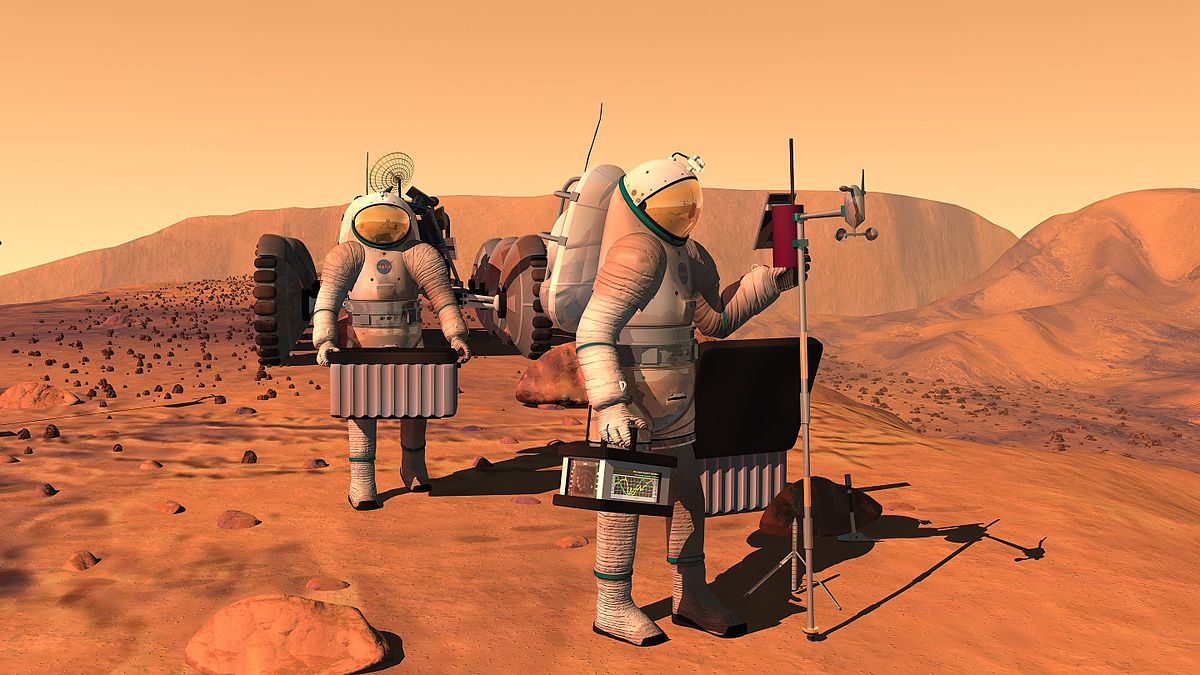
Researchers from Lisbon and Porto Universities believe that future crewed missions to Mars could make their own oxygen for exploring the surface from the local atmosphere. “Sending a manned mission to Mars is one of the next major steps in our exploration of space. Creating a breathable environment, however, is a substantial challenge,” said the lead author of the study in the journal Plasma Sources Science and Technology, Vasco Guerra.
Guerra and colleagues are investigating cold plasma, an ionised gas at low temperatures but containing fast-moving electrons and ions, for converting CO2 emissions from industrial processes into hydrocarbon fuels using solar energy. “Low temperature plasmas are one of the best media for CO2 decomposition – the split-up of the molecule into oxygen and carbon monoxide – both by direct electron impact, and by transferring electron energy into vibrational excitation,” he explained (for an example, see here).
Mars offers excellent conditions for applying this process to the CO2 atmosphere — known as In-Situ Resource Utilisation (ISRU) — the low temperatures on the surface may even make the process more effective by slowing the reaction down so that more molecules can be converted and separated into a breathable stream and a carbon monoxide stream. “Carbon monoxide has been proposed as to be used as a propellant mixture in rocket vehicles,” Guerra said. “The low temperature plasma decomposition method offers a twofold solution for a manned mission to Mars. Not only would it provide a stable, reliable supply of oxygen, but a source of fuel as well.”
Using such a system “could help significantly simplify the logistics of a mission to Mars,” Guerra added. “It would allow for increased self-sufficiency, reduce the risks to the crew, and reduce costs by requiring fewer vehicles to carry out the mission.”




Red Bull makes hydrogen fuel cell play with AVL
Formula 1 is an anachronistic anomaly where its only cutting edge is in engine development. The rules prohibit any real innovation and there would be...